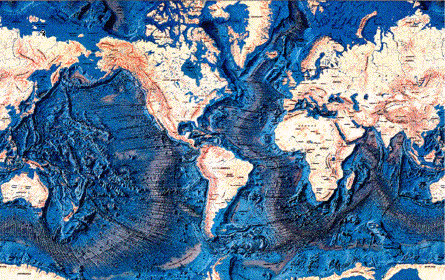What are the differences between basins, tight sand & shale plays? Why are the resources that come from them different? Do you have to drill through them differently?
We are going to explain the differences in basins, tight sand, and shale plays in a three-post series.
Basins are geographically the largest of the three, so we will start there.
A basin is a dip or a depression in the earth’s surface, a bowl if you will. They generally have sides higher than the bottom. Basins were not created overnight, more like thousands of years. They are formed by forces above the ground, like erosion or below the ground, like earthquakes. Of course, with the earth being so vastly different you know there must be different types of basins. The map above shows basins that are in the United States. The three major types are River Drainage Basins, Structural Basins, and Ocean Basins. Here is a quick breakdown of the three.
What are the different types of basins?
- River Drainage Basin- The land that water must cross to reach a river. The lowest part of a basin drains all the available water from various tributaries, creeks and streams in its area.
- Structural Basin- It is formed by tectonic activity, the natural processes of weathering and/or erosion. They are found in most dry regions.
- Ocean Basin- The larges of the three depressions. The picture below shows that to be true. The edges of the continents, known at the continental shelves, form the sides of the ocean basins. These basins are constantly changing due to tectonic activity, such as seafloor spread and subduction. Ocean basins are at depths of thousands of feet below the ocean’s surface. Because of this depth, they remain the most elusive to scientists.
Now that we have learned what a basin is, let’s discover how it is tied to the oil and gas industry.
The natural resources that the consumer craves in these basins are generally formed the same way, with organisms, sediment, pressure, heat and time. (Remember: I am not a scientist!) The sediment, which is the remains of plants, animals, that have been covered in salt and silt, have been pushed down deeper and deeper towards the earth’s crust. The energy stored within these organisms, along with the immense pressure and heat created the sand. More pressure and heat created rock. There are layers upon layers of this. Different levels of heat, pressure, and organic make-up are the deciding factor in the creation of crude oil or natural gas underground. If the rock surrounding the resources is porous they will travel through the rock. If the rock is not porous the resources will be trapped in a reservoir beneath a basin, then the drilling begins.
I hope this first part of my three-part series helps you to understand the definition of a basin and how the term is used within the oil and gas industry.
Check out the next blogs on Tight Sand and Shale Plays.












